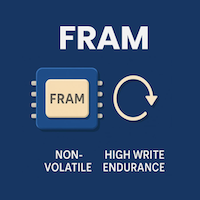IoT in Education Industry

Much significant advancement has been achieved in education during the last few years. An individual's or a child's "Education" is related to more than just the books in their collection; it also includes the context in which those books are used. The contributions of technology have greatly enhanced the quality of 'learning' and the ambiance around it. Technological developments have allowed for the advent of digital reading and have also helped digital books integrate seamlessly into classrooms. Learning environments have improved as a result of both scholarly and technical developments. Therefore, the use of technology in classrooms promotes learning and learning outcomes. Numerous industries, including academia, will be affected by the ongoing changes to the IoT.
Explain the Internet of Things
The "Internet of Things" (IoT) describes the vast number of physical objects that can now connect to the web and exchange and receive information. In all likelihood, these gadgets might be discovered in locations all over the world. Now that inexpensive central processing units (CPUs) and wireless networks are readily accessible, anything with a sensor may connect to the Internet of Things. The smartphones and PCs of students are also part of the Internet of Things.
As a consequence of the IoT, everything from homes and cars to people and medical devices to farm equipment is connected to the web. An added bonus is an almost limitless number of applications for IoT-based solutions in the classroom. Below, we'll take a look at a wide variety of applications.
School districts may use IoT to streamline operations, provide individualized instruction, track students' attendance, and distribute digital curricula to their students' own electronic devices. Further, it enables the development of "smart classrooms," which are the most effective way to keep kids interested in what they're studying.
The Potential of IoT-Based Educational Applications
The Internet of Things has the potential to help us broaden access to education across socioeconomic and linguistic lines. The potential applications of IoT technologies in the classroom are almost limitless. Let's have a look at several Software programs. They will provide a solid foundation from which to build a deeper comprehension of the IoT's potential applications in the classroom.
Accessory gadgets
To monitor their whereabouts, students are given tracking devices to wear. All of their technological devices are linked to a single, centralized network. This eliminates the need for manual attendance taking since these technologies can already ascertain whether a student is present in the classroom. The device may also notify mom and dad of their kid's location through text message. In conjunction with other Internet of Things sensors, these gadgets might selectively unlock doors for authorized personnel only. Moreover, they may report illegal visitors to the proper authorities.
Learning and instruction tailored to each student
The availability of Internet-connected devices and the apps that can be put on them has opened up new possibilities for tailoring the learning experience to the individual needs of each student. The software may analyze a student's performance and provide suggestions on how to modify the lesson plan to be more effectively used with each student. The application may offer the teacher real-time data on how each pupil is doing.
The Computerization of Reports
With the help of AI, school administrators may employ linked devices to generate reports on various topics on a weekly, monthly, or annual basis. Students' progress, budgetary projections, recommendations to the board of education, and other issues may all be included in such reports.
Study anywhere and whenever you choose.
If you have a digital gadget and access to the internet, you can learn about anything no matter where you are in the world. Harvard now offers online courses, so students from all over the world, even those without easy access to the university's physical locations, may participate in the same classes. Through the convenience of online learning, it is now much simpler to expand one's horizons and learn about new areas of interest or expertise. If you have a connected device, you can do whatever you want, whether you're a high school student researching a geography assignment or a working professional wanting to further your career.
Education in smart classrooms
The future classrooms will be a technological nirvana for students and teachers, thanks to the advent of the Internet of Things. With augmented reality (AR), students may quickly and easily find information on any subject they're studying. Soon, teachers will be able to utilize textbooks equipped with augmented reality features. Using a product like Carlton Books, the illustrations will be more vivid and engaging, almost popping out of the pages. The notion of virtual reality is another option (VR). Because of this technology, students may visit exotic locations. From the inner workings of a human body to the inner workings of complicated machinery, students may explore any topic in great depth. The potential outcomes are infinite.
Language Learning for the World
One of the most successful strategies for picking up a second tongue is immersion, which relies heavily on instantaneous feedback to guide instruction. Learning French in France affords you the unique chance to get "free" immediate feedback from native French speakers. It isn't easy to recreate the context of the language outside of the countries where it is spoken.
The IoT meets such a need. Using linked devices to ascertain whether or not students have made the proper statements or choices in foreign language simulation settings allows teachers to deliver real-time feedback to students and automatically track student progress. This allows for instantaneous teacher-student communication.
Introduction to Technology and Currently Available Materials
These classrooms will operate on the foundation of IoT education applications. Students not in class when the bell rings are marked present for attendance purposes. All classroom notes will be archived on whiteboards, and students' wearable tech will signal when they're too tired or uninterested in studying to continue without a break. Smart microphones may even pick up on a teacher's announcement of an imminent homework due date, so the students' schedules would be automatically updated.
Focused Instruction on Specific Goals or Tasks
A significant shift in today's schools is from a paradigm that places a premium on lecturing to one that places more value on group projects and sharing knowledge. The Internet of Things (IoT) will profoundly affect how we educate children because linked technologies relieve educators of the need to keep track of and evaluate student performance. While a result, educators will have more time to actively engage with students as they learn, rather than merely repeating content. In task-based education, students participate in activities designed to help them learn by doing, with guidance from teachers as needed. Feedback, assistance, and classroom-level monitoring might all be provided mechanically by IoT devices. One persistent problem in the classroom has always been preventing pupils from falling too far behind or gaining too far ahead of the rest of the class.
Conclusion
The state of California passed a rule in 2009 requiring all university textbooks to be made available in digital format by the year 2020. The state legislature of Florida mandated in 2011 that all public schools must switch to digital textbooks. Indeed, research shows this to be the case. It's easy to see how the concept of technology as a whole may cover a great deal of ground. One of the most influential aspects of modern technology is the Internet of Things (IoT). This is a reference to IoT or the Internet of Things. The term "Internet of Things" (IoT) describes the widespread use of internet connectivity in everyday objects and tools. Incorporating hardware, electronics, and an online connection at different points within this overarching concept is essential. Undoubtedly, the education sector has progressed with the consistent support of IoT, which in turn has allowed it to ascend the ladder of rising wealth.
Explore more
Need any help in IoT?
Need any help in IoT? An Atreyo expert identify the right solution for your needs.
If ready to talk to an Atreyo expert
Interested in IoT products? go to







